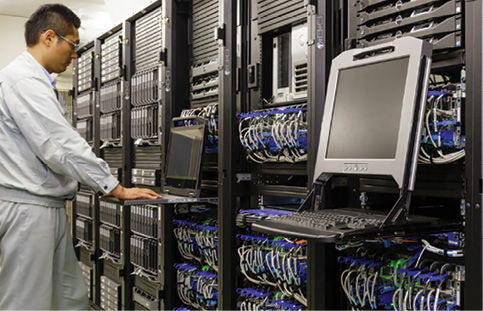Latest News
June 1, 2018
 Simulation software has enabled major breakthroughs in engineering as more companies use it to test the effectiveness of their designs. In the world of shipping, computational fluid dynamics (CFD) software has helped organizations such as Nakashima Propeller in Japan create designs that are helping shipping companies save resources by propelling ships more efficiently while protecting the environment.
Simulation software has enabled major breakthroughs in engineering as more companies use it to test the effectiveness of their designs. In the world of shipping, computational fluid dynamics (CFD) software has helped organizations such as Nakashima Propeller in Japan create designs that are helping shipping companies save resources by propelling ships more efficiently while protecting the environment.
The central challenge for Nakashima Propeller is coming up with designs that increase propulsion efficiency. The propellers have to combat a phenomenon called cavitation, which is when air cavities form on the propeller surface, causing a drop in propulsion and an increase in vibrations.
 “Until recently, virtual water tank analysis of the system would take about two weeks, but with our 96 Dell PowerEdge M630 blade servers in place, the work can be done in about two days.”
“Until recently, virtual water tank analysis of the system would take about two weeks, but with our 96 Dell PowerEdge M630 blade servers in place, the work can be done in about two days.”— Masanori Hirota, Nakashima Propeller
With CFD, Nakashima Propeller staff can assess the quality of their designs by simulating flow conditions and measuring the level of cavitation. However, it is also necessary to complete the cavitation analysis of each propeller within two hours. This requires massive numbers of calculations, and with that in mind, Nakashima Propeller accepted a proposal from HPC Solutions to create a high performance computing infrastructure built on older Dell PowerEdge blade servers. The company created an HPC cluster for parallel computing with 32 Dell servers, offering a total of 256 cores, running Windows HPC Server.
Software Cradle provided its SC/Tetra thermo-fluid simulation software. With this solution, Nakashima Propeller was able to drive innovation while providing compute power during the design process.
The Increasing Environmental Challenges
Over time, the need for computing power increased. New initiatives such as the Energy Efficiency Design Index (EEDI) meant ships had to be even more fuel-efficient. In addition, the shipping industry faced greater pressure to reduce the impact of propeller design on marine life. As a result, the amount of analysis that went into propeller designs increased substantially. Even with the support of CFD technology, Nakashima Propeller found it challenging to maintain the efficiency gains it had established with its HPC solution. It was time to substantially increase the power of the infrastructure.Nakashima Propeller turned to Dell EMC once again to increase the performance of its HPC environment. The company added a number of the latest-generation Dell EMC PowerEdge servers with Intel® Xeon® Processor E5-2600 v3 for parallel processing, plus 96 Dell EMC PowerEdge M630 blade servers running Intel Xeon Processor E5-2600 v3. Dell EMC ProSupport was chosen to help maximize performance. At the same time, the company retired its original Dell PowerEdge servers. Today, the enhanced HPC cluster consists of 244 nodes with about 5,000 cores.
The company chose the Dell EMC PowerEdge M630 blade servers not least because of their reputation for successfully supporting a number of HPC infrastructures worldwide. In addition, the half-height blade server requires less cabling than other servers and generates less heat. They also save space and are a good value for money. Masanori Hirota, Deputy Manager, Propeller Design Department, Engineering Division at Nakashima Propeller, says, “Many sets of Dell PowerEdge servers with Intel Xeon processors have been used. They are stable and no major trouble has been encountered.”
Reduces Time for Analysis from Weeks to Days
The company has seen development times reduced as a result of enhancing the Dell EMC HPC infrastructure. As part of the development process, engineers do tank modeling, where they put miniaturized versions of ships in a tank to see the effects of changing the propeller design on the ship’s propulsion and to observe cavitation. To ensure accuracy, the CFD software needs a great number of mesh cells to account for the size of the finished ship, which in turn increases the number of calculations by many millions. Hirota says, “Until recently, virtual water tank analysis of the system would take about two weeks, but with our 96 Dell EMC PowerEdge M630 blade servers in place, the work can be done in about two days. In addition, the parallel calculation is 70 to 80 times faster than before.”Subscribe to our FREE magazine, FREE email newsletters or both!
Latest News
About the Author
DE’s editors contribute news and new product announcements to Digital Engineering.
Press releases may be sent to them via [email protected].






